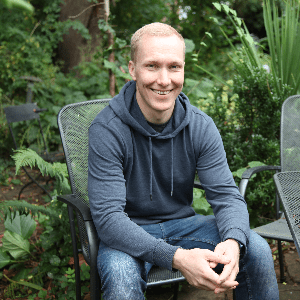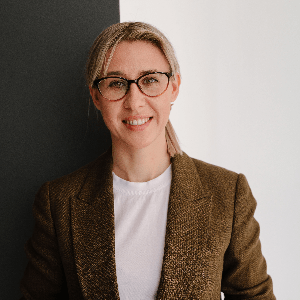With so many SaaS growth stories out there, you might be thinking: How can I achieve continuous growth for my own SaaS product? Building a great product is a given, but what drives the operation is your understanding of how a prospect converts into a user and the way you sell your product.
Users have fully embraced the interconnectedness of tools and expect software to adapt to their workflow and needs. The market has evolved to focus on the user, and end-users find products on their own and tell others which ones to buy. The software companies that have witnessed tremendous growth are ones that have already recognized this new dynamic.
When charting the course of your product, you need to admit that the end-users are at the core. They are both the buyers and sellers of software. End users will find, evaluate, and adopt your product on their own. In this era, product-led growth (PLG) is what thrives.
What Is a Product-Led Growth Strategy?
The product-led growth strategy relies on the product to generate active users who are precursors to paying customers and acquiring new users. The product does the bidding in bringing in and retaining its customers. The most successful SaaS products of recent times have implemented the PLG strategy. Logically, it follows that it is the PLG strategy of these companies that led to the continuous growth of their products.
The product-led growth strategy often involves creating a frictionless user experience right from the sign-up and offering users the choice to pay after they find value in the software at their own pace. If your product generates a positive evaluation from the users, the users get converted into buyers or bring in new prospects through referrals.
The Main Principles of Product-Led Growth
The philosophy of product-led growth stands on a few main pillar principles.
The Product Stands on Its Own
PLG companies should understand that the product has to be able to function without any intervention. Companies must ensure that the product is ready for launch and does not need frequent tweaks or intervention to drive acquisition, expansion, and retention. The company will have to divert resources to create a product that ensures frictionless user experiences from the inside out. The user should never have to leave the platform or seek the intervention of a representative to successfully onboard and adopt the software. There are successful SaaS products that show that implementing pop-up guides can be a way to eliminate the need for external representatives.
The Product Gives Immediate Value to the Customer
The lag between a customer wanting to try the product and experiencing the benefits of using it should be non-existent. Ideally, the customer should get access to the product within a minute of giving the product a thought. The objective is to delight the customer as soon as possible. A single click to sign up that does not require customers to fill up much information is one of the foolproof ways that achieve this motive. It becomes necessary to understand why a customer may want to use your product and make that primary function easily accessible.
The Product Can Be Taken on a Test Ride
Successful PLG companies understand the appeal of offering users a taste of the product before requiring them to pay for it. Customers who experience the product first-hand get the impression that it is risk-free. Such customers can be relied on to become loyal and engaging users. With PLG, companies focus on creating rather than extracting value. The user experience is what the product revolves around. A limited-time free trial or a freemium model is often employed to create value without a paywall. When pricing gets introduced, PLG companies ensure transparency in pricing and packaging.
What Does a Product-Led SaaS Product Look Like?
Noteworthy examples of Product-led companies include Zoom, Calendly, Slack, Notion, Typeform, Airtable, Wave, and Shopify. The product-led SaaS products often share similar outlines.
Get Started – It’s Free
It is safe to assume that the customer already knows the value delivered by the product if they are on the verge of signing up for it. It follows that if the process of signing up is frictionless, the customer will be even more delighted. A frictionless sign-up flow usually means that users won’t have to fill up much information or encounter payment or installation walls. The user gets to the UI in less than a minute, boosting successful sign-up rates.
Tell Us About Yourself
As the end user is the center of the product strategy, keeping the user delighted right from the beginning is necessary. Today, most products offer interconnected features that may or may not be specific to the new user. To allow for the product to be set up to adapt to the new user and ease the onboarding, PLG software collects information regarding the expectations of new users from the product. The user experiences the core features of the product tailored to their requirements as soon as possible.
Liking It? Spread the Word
Here is where the end-user takes up the role of the seller. A user who has been enjoying the features of the product without encountering any risks becomes an endorser. If everything has been going right with the product and apprehensions are none, the user will be quick to share the product with others. At this step, the growth loop gets initiated, new users get brought in, and the cycle continues.
Sign Up for Premium Today
Ideally, the product should have become integral to the user’s digital experience when the user reaches the threshold of free use. The user would have already realized the need to make the premium purchase. Rationally, the premium package will appeal to a user who is already impressed by what the product offers for free. If a user is on the fence, a marketing tactic that can act as that needed nudge can be applied. Discounts or external interventions could do the trick and convert users into buyers.
The Freemium Model for Product-Led Growth
The word “freemium,” a play on the words free and premium, has a self-explanatory meaning. The freemium model allows users to experience limited features of the premium version of the product for free. Allowing free access to a product helps your business in the long run by convincing users that your product is worth their money. Think of it as allowing users a test ride of the product before committing to it long-term. However, allowing users free access to your product does not mean they will purchase for continued access. You will need to implement other strategies while executing to ensure that the freemium-to-paid conversion rate of your product is appreciable.
The Free Trial Model for Product-Led Growth
Free trial is a product-led model that is similar to the Freemium model. The Free Trial and Freemium product-led models are in place for customer acquisition and work on the logic that free access will convince prospects that a product is worthy of purchase. The difference between the two is that, unlike the free trial, the freemium model provides free access to limited features for an indefinite time. Whether the free trial gets initiated with or without acquiring the credit card details of a customer depends on the company’s strategy. With two very similar models, the choice of the product-led model rests with you and the specifics of your SaaS product.
Product-Led Growth and The Viral Loop
The viral loop is the achievement of continuous growth through continuous referrals. It is a method of creating unavoidable visibility for a product through people who share information about it. A prospect becomes exposed to the SaaS product due to an existing user of the product. A SaaS product designed to function when multiple users work with it at a single time has the potential to go viral. A user who looks for specific features will find a SaaS product and evaluate it through free access. If the product does its job in doing its bidding, the user gets motivated to recommend it to coworkers or bosses. The improved business experience caused by the SaaS product retains the new and existing customers.
Why Should You Choose the Product-Led Growth Strategy?
Product-led growth is the front-runner of all the growth strategies in today’s end-user era. The success stories of many recent product-led SaaS companies are testimonials. When you compare marketing-led or sales-led growth strategies with product-led growth strategies, the latter’s benefits are more evident.
With the product selling itself, attracting new customers is cheaper. Existing users and buyers sell the product to other prospects through referrals. The product-led growth strategy also increases the rate of retaining acquired customers. The design of such products to provide immediate and unwavering value to customers also reduces the churn rate, which is the annual percentage rate at which customers stop subscribing to a product.
Product-led growth strategy forces companies that adopt it to keep a tab on user data and user experiences. Subsequently, the users are kept happy. When the existing users are satisfied, new users will follow. To catch up with the competition, the company will have to keep brainstorming new ideas leading to sustained innovation within the business.



